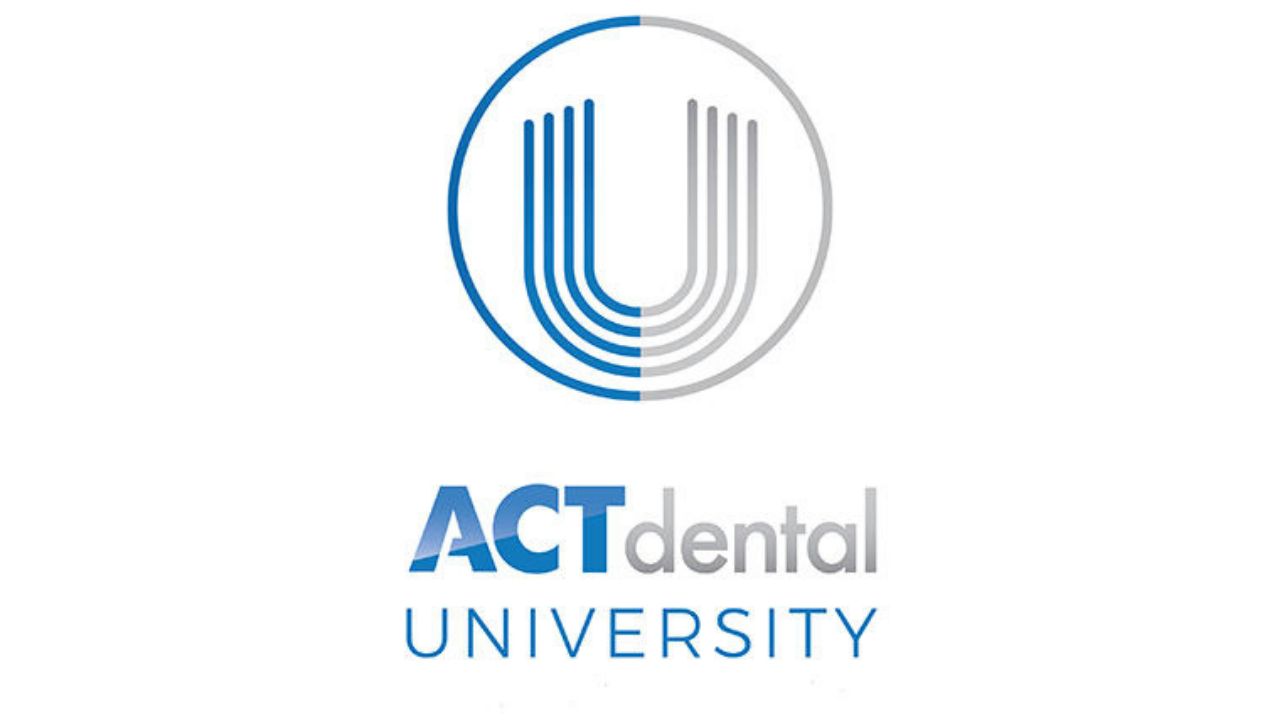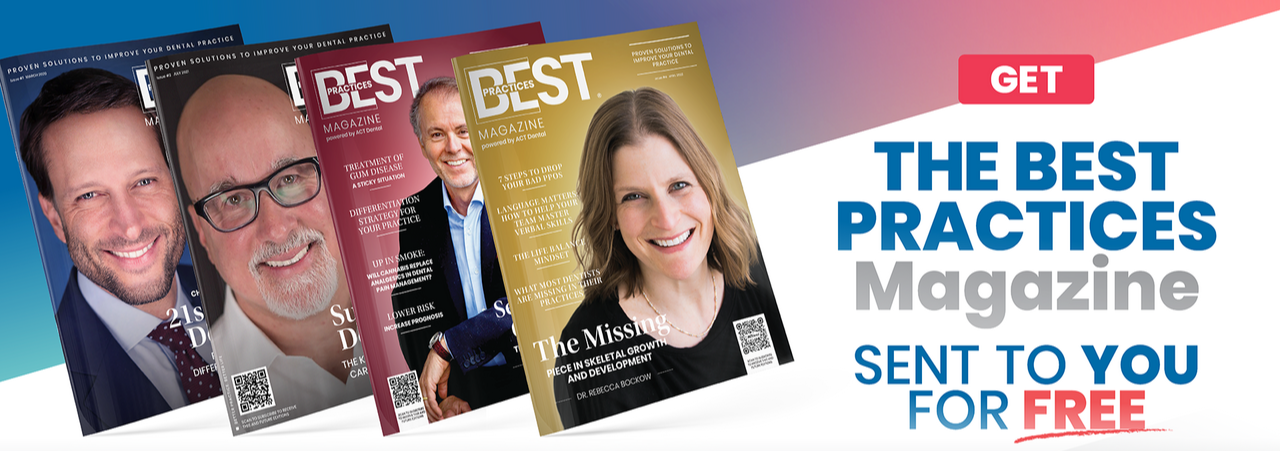You’ve heard it everywhere—from magazines, presentations, dental conferences and colleagues. Creating and growing an in-house membership program or savings plan is one of the best ways to grow and retain your patient base, reduce your dependency on insurance companies and add more revenue streams to your dental practice.
Offering an in-house membership program is an excellent method for attracting new patients, retaining current patients and offering quality dental care to patients without dental insurance. Relying on insurance companies to drive business to your practice is risky and unpredictable. Membership programs can offer many benefits to patients while helping transform your practice into a fiscally healthy business.
What Is An In-House Membership Program?
A membership program is a set of plans that you offer your patients. These plans offer discounted dental care for a monthly or yearly subscription fee.
Once subscribed, a member might benefit from free cleanings, as well as a discount on other dental procedures. This type of program frees patients and your office from the tethers of insurance companies.
The following are just a few of the great benefits of in-house membership programs:
- A predictable, recurring revenue stream
- Complete control over the treatment methods you choose
- Increased patient loyalty and return rates
- Motivation for patients to get long-awaited dental procedures
- Fewer problems dealing with insurance companies
- Improved value of your dental practice
- How insurance plans affect your dental practice
Consider this: At the end of 2016, approximately 249.1 million Americans—or 77 percent of the population—had dental benefits.
Two-thirds, or 164.2 million Americans, had private dental coverage. About 90 percent of those Americans get their benefits through an employer or other group program like AARP. Another 7.1 percent purchased individual coverage, while just less than 3 percent of Americans obtained dental benefits as part of a medical plan.
Another 83.9 million Americans got dental benefits through public programs like Medicaid, the federal Children’s Health Insurance Program and TriCare, which provides coverage for individuals serving in the military.
Overall, this is a large percentage of the population covered by dental insurance programs.
According to the National Association of Dental Plans (NADP) report, The Haves and the Have-Nots: Consumers with and without Dental Benefits, Americans who have dental benefits are more likely to go to the dentist, take their children to the dentist, receive restorative care and experience greater overall health.
You may think this helps your business—after all, more insurance coverage should equate to more patients visiting the dentist regularly, right? Really, this is not the case.
When you participate with insurance, the patients that you serve are 100 percent governed by someone else’s fee schedule. You pay a big discount to provide care to those people while they are under those terms. Additionally, patients under dental insurance plans are governed by quality of care choices. This means the treatment plan you choose is managed by people apart from you and the patient.
It can be much more beneficial to cut out the middleman and offer a solution that works better for both you and your patients.
Issues With Dental Insurance
It’s important to talk about the dental insurance business model, so that you can understand this part of the industry and how it affects your business each day. Insurance is an outdated, and frankly, unethical business model for dentistry.
There is a reason why insurance companies own some of the biggest buildings in town—they understand the importance of recurring revenue. However, they profit in a few different ways.
Insurance companies create guidelines, so they can become profitable by rejecting claims. They also understand that a certain percentage of patients won’t use their benefits. This allows the insurance companies to make a profit off the recurring revenue from those patients.
This same situation will occur in your membership program—some patients will buy in but choose not to use your benefits. That being said, your program will run differently.
I am sure your office staff is worn out and tired of thinking about how to deal with insurance companies and their policies. One of the reasons these companies are unethical is because they are able to make money by rejecting claims.
Does this sound like a partner organization that will help you and your patients? No!
As a dental professional, I have seen hundreds of patients who need certain dental procedures, but their insurance companies have rejected their cases on the basis that “their condition was not bad enough.” How frustrating! This is why it is important for you to cut out the middleman and create an in-house membership program.
What You Should Know About Membership Programs
An in-house membership program can benefit both patients with dental insurance and patients without. And, most importantly, it can benefit your practice and your profits.
Membership programs in general have proven to be successful for a variety of reasons. Consider the membership programs you’re currently part of: health clubs, Costco, iTunes, Amazon, cable TV, etc. As a part of these memberships, you tend to spend more money with those particular organizations, right? And, since you’re already paying them for a service, you tend to return to them again and again instead of going to their competitors.
These programs work similarly in dentistry. Membership programs can provide important benefits for your team and improve profit margins while allowing you to distance yourself from insurance companies and reduce your dependency on their clients.
One of the greatest benefits of an in-house membership program is that you have complete control. The future of your program, the billing schedule and the treatments you administer are all in your hands, and your hands alone. However, control isn’t the only thing they can offer.
Generate Predictable Revenue For Your Practice
Managing a successful practice can be challenging, and revenue can be inconsistent at times. Economic lulls and patient cancellations can affect a practice, as can delays in insurance payments or restrictions on which treatments patients can receive and when.
A stable membership program can provide you with a healthy stream of recurring revenue that you can predict from month to month. This can provide invaluable stability during periods of slow business. For example, if your office has a membership plan for $30 a month, and you secure 300 subscribers to this plan, you can count on generating at least $9000 per month in revenue.
This is all in addition to the fees you collect for standard services and procedures, meaning you benefit from the membership fee plus any other treatments your patients need.
Improve Practice Valuation
Recurring revenue can be a magical elixir for any business, and that is what membership programs provide. When you’re operating an in-house membership program, you’re creating residual income without selling anything. This income can help cover a lot of your overhead expenses, including facility payments, equipment payments and team compensation.
We have coached many practices that have seen healthy returns on their in-house membership investment, which has led to improved values of their practices. If you want to build a financially strong practice, implementing a recurring revenue model can do wonders for your business and benefit you greatly if you decide to sell your practice.
Increase Patient Loyalty
Securing subscribers to an in-house membership program is a nearly fool-proof way to retain patients. When patients are already paying for a membership at your practice, you create a situation in which they can only see you and no other practice (unless they want to pay extra money!). Members who pay a subscription fee will also be less likely to cancel their appointments. Increased patient loyalty leads to better dental health for them and a steady revenue stream for you.
Additionally, by belonging to a membership program with discounts, your patients have a higher likelihood of spending more money at your practice than they might have otherwise. An example of this type of situation in action is Amazon’s membership program, Amazon Prime.
According to MorningStar market research provider, the average Prime member spends about $1,224 annually, whereas a non-prime member spends about $505 annually. A similar instance can occur in your practice.
Finally, using an in-house membership program allows you to retain patients no matter what their employment situation is. Many practices lose patients because they switch jobs and insurance providers and/or benefit structures. When you’re operating outside of insurance plans, your patients can stay with you year over year.
Decrease Hassle Of Working With Insurance
Dealing with insurance can cause trouble for both your staff and patients. Waiting periods, PPO providers controlling your profits, claim submission and payment processing are all headaches and can ultimately slow your cash flow.
Some practices contend that managing an in-house membership program carries its own pain points. But there are many resources, including membership software solutions, that help automate payments and make it easy for your office to create and manage plans and members without needing to deal with insurance companies.
Your overhead is always higher when you are heavily involved with dental insurance. Usually, your team compensation percentages will be higher than 30 percent due to the fact you have patients making decisions completely based on what their insurance covers—and, your fee is typically discounted.
With an in-house membership plan, you can present a “discount-like” offer for your services and still make more money in the end without insurance companies being involved. I actually like the word “savings” over the word “discount.”
Additionally, you can serve your patients in a way that they pay less for their dental benefits than they currently do through their employers.
“I’m Fee-for-Service, why would I want a membership program and give away percentages that I don’t have to?”
This is a great question. My answer is that you don’t have to give away any discounts in the end. Let me explain.
Building an “In House Membership Program” when you are fee for service is a proactive way to build another layer of loyalty on top of the layers you already have created.
By NOT HAVING one, you limit your practice growth portfolio with three primary investments:
- Loyal cash paying patients
- Extremely well trained team members that can help patients see beyond insurance
- Specialists who refer to you (if you are a GP) and explain to patients that they will have to pay cash when they see you
By HAVING one, you diversify your practice growth portfolio with a 4th powerful asset:
- You now have an easy way to attract the largest segment of people in dentistry. Patients that go to the dentist because they perceive they have some type of benefit to do so. It is sad, but painfully true. And the data shows it. Americans who have dental benefits are more likely to go to the dentist, take their children to the dentist, receive restorative care and experience greater overall health. That is 77% of the population. Last I checked, that was a big percentage of anything. To ignore 77% of the population when building a business is just negligent as a business owner.
Yes, I get it. But What about the discounts?
As for the so call “discounts?” At the end of the year every dentist should do a fee balance to look at what they gave away for patients to use this program in your office and adjust it properly within your fees for the upcoming year to absorb 100% of the cost of doing business with a membership program.
For instance, lets say you produced and collected $1.5 million (fee-for-service) and $400,000 of it came from discretionary care beyond the base membership fee from patients who elected to use your membership program. You would be offering a savings of 15% for that $400,000, which is $60,000.
Let me pause there. Are you with me so far?
That means you gave away $60,000 to get $400,000 in additional production that you wouldn’t have. Now that doesn’t include the fact that these 300 patients also pay $30 a month to be a part of your program which is $9000 a month in recurring revenue. That covers a lot of rent and debt payments. $9000 x 12 = $108,000. Heck, your monthly membership fees cover the adjustment alone.
Also, keep in mind, that $60,000 that you gave away to get $400,000 is a cost of doing business (that is better than paying an insurance company) that has to be figured into the next 12 months of doing business. My coaching is to do a fee adjustment of your top 10 fees that were used within that $400,000. Print them out. See what the fee is for each and adjust them to easily cover what you gave away for the last 12 months.
Way too easy to do. Even easier, when you take into the fact that our ACT Dental Coaches go into the best practices in the country and find that most dentists aren’t anywhere near the 70th percentile with their fees according to the NDAS figures.
These are dentists that regularly attend Seattle Study Club meetings, Spear Education, The Kois Center, The Dawson Academy and the Pankey Institute. These are committed dentists. They care about the quality of their work. They are much better than 70%. Just putting their fees in the 80th percentile alone will MORE THAN cover the savings you gave away in a year of providing a membership program.
So lets review the math.
You gave away $60,000 to get $400,000 of production that you wouldn’t otherwise have had on this program. This program has 300 patients (loyal ones) that pay $30 a month which equals $108,000 a year of recurring revenue that comes to your practice whether these patients come in or not. On top of it, your going to do a fee adjustment for the next 12 months to cover the cost of doing business for the last 12 months (so now you get the $60,000 or more back in the next 12 months) so you didn’t really lose it anyway. So the final net gain on having 300 patients paying $30 a month is $400,000 + $108,000 + $60,000 or more (delayed by a few months) = $568,000.
That is $568,000 that you wouldn’t have if you didn’t have one.
Sounds like a triple win to me. The patient wins because they can now get optimal care in a way they can afford it. The practice wins because you build a bigger base of truly loyal patients that won’t go anywhere else because “members enjoy benefits.” The dentist wins, because they don’t have to sign up for any more lousy PPOs and deal with shared agreements for decades to come. On top of it, the dentist is the sole administrator of the plan and decides what “optimal” care is. There is no maximum to the plan you have created. The dentist also makes more profits year over year. Oh and lastly, when it comes time to sell, your practice valuation is exponentially higher than ANY other practice that produces the same as you, because the other practices have a ton of PPO’s and you decided to go another route and build your practice with hundreds of truly loyal patients that stayed in your practice.
So my suggestion is to do it. Don’t even think about it. Everyone wins.
Implementing an in-house membership program for your dental practice not only improves your business’s profits, but it can also make your team’s life a little easier and provide your patients with better, less expensive and restrictive care than they receive through dental insurance.
I encourage all dental practices to consider implementing this type of program because it truly helps grow your patient base, retain patients and bolster your bottom line.
Members enjoy benefits……so will you.
See you soon!
Kirk
Categories

Get access to the best dental educators on the planet to bring you "best practices" and help you become the dentist you were called to be. Watch what you want, when you want it. It's 24/7 on-demand access. Friday's we host "Master Classes" with the very best dental speakers you will ever see.

Reserve your spot at the next ACT Dental Master Class
Learn From One of the Best Educators During Our BEST PRACTICES MASTER CLASS Experience.
Kirk Behrendt
Kirk Behrendt is a renowned consultant and speaker in the dental industry, known for his expertise in helping dentists create better practices and better lives. With over 30 years of experience in the field, Kirk has dedicated his professional life to optimizing the best systems and practices in dentistry. Kirk has been a featured speaker at every major dental meeting in the United States. His company, ACT Dental, has consistently been ranked as one of the top dental consultants in Dentistry Today's annual rankings for the past 10 years. In addition, ACT Dental was named one of the fastest-growing companies in the United States by Inc Magazine, appearing on their Inc 5000 list. Kirk's motivational skills are widely recognized in the dental industry. Dr. Peter Dawson of The Dawson Academy has referred to Kirk as "THE best motivator I have ever heard." Kirk has also assembled a trusted team of advisor experts who work with dentists to customize individual solutions that meet their unique needs. When he's not motivating dentists and their teams, Kirk enjoys coaching his children's sports teams and spending time with his amazing wife, Sarah, and their four children, Kinzie, Lily, Zoe, and Bo.
RECENT POSTS
876: The Kois-Coachman Digital Dentistry Event & The IntraOral Scanner Festival – Dr. Christian Coachman
April 18, 2025
Rest Isn't A Reward, It's A Requirement!
April 14, 2025
Data Snapshot: # of Office Days Open
April 11, 2025
Weather Any Storm: The Power of Focus
April 07, 2025
871: Metric Mondays: Gross Profit Percentage: The Health Indicator of Your Practice – Dr. Barrett Straub
April 07, 2025
Embrace Conflict to Unlock Trust
April 04, 2025







